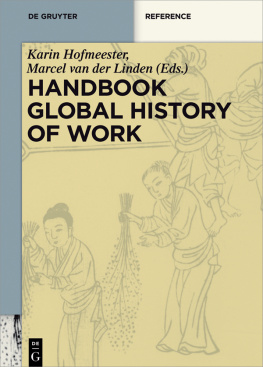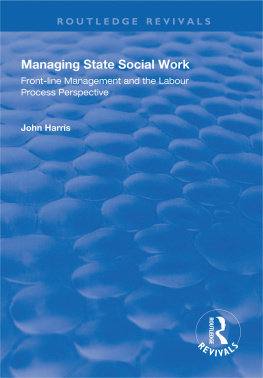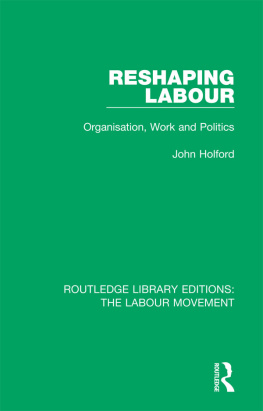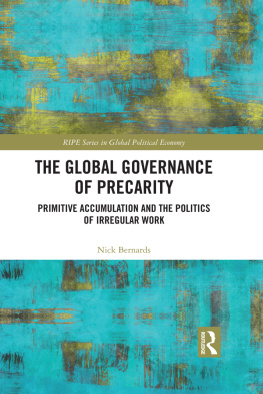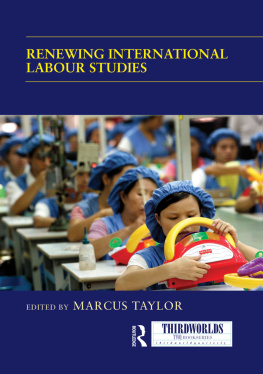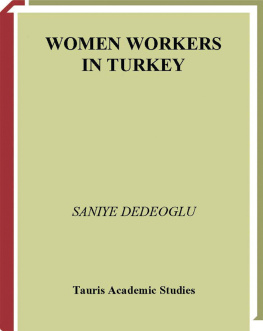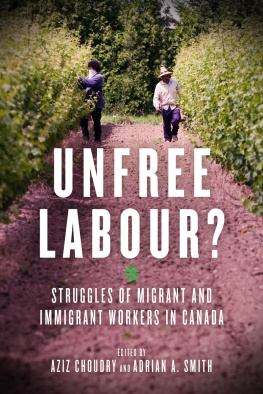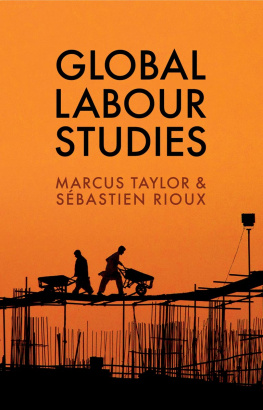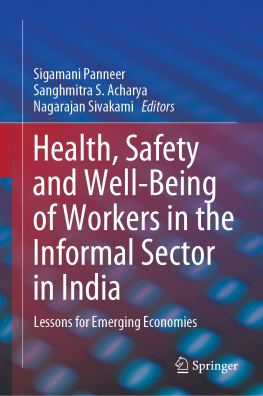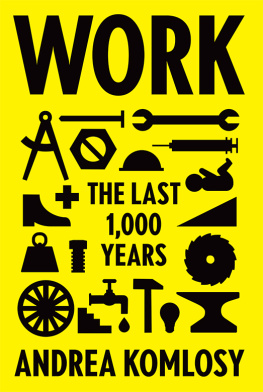Contents
Guide

Handbook The Global History of Work
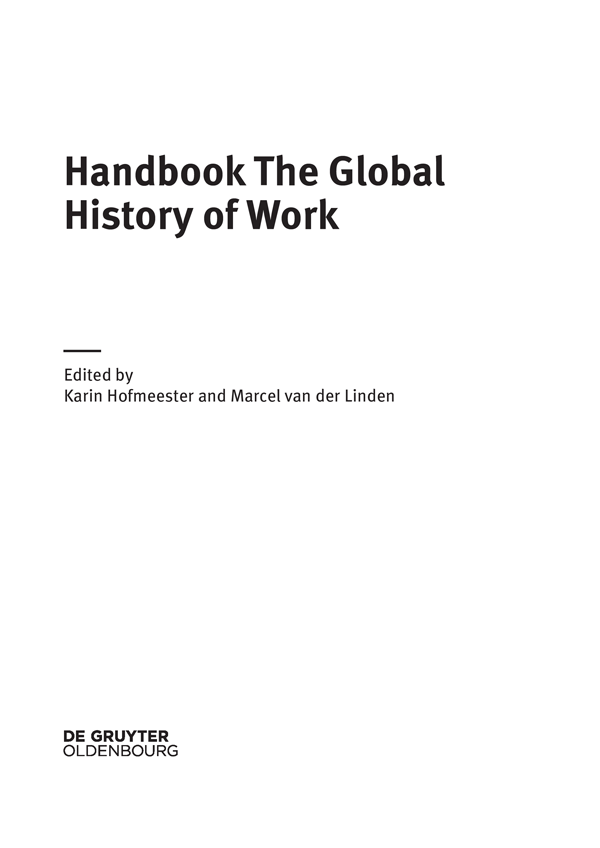
ISBN 978-3-11-042835-3
e-ISBN (PDF) 978-3-11-042458-4
e-ISBN (EPUB) 978-3-11-042470-6
Library of Congress Cataloging-in-Publication Data
A CIP catalog record for this book has been applied for at the Library of Congress.
Bibliographic information published by the Deutsche Nationalbibliothek
The Deutsche Nationalbibliothek lists this publication in the Deutsche Nationalbibliografie; detailed bibliographic data are available on the Internet at http://dnb.dnb.de.
2018 Walter de Gruyter GmbH, Berlin/Boston
Cover image: Reciprocal labour: Winnowing rice grains, China c. 1700. Source: Keng-tschi tu,
Ackerbau und Seidengewinnung in China; ein kaiserliches Lehr- und Mahnbuch. Transl. and ed. by Otto Franke (Hamburg, 1913), plate 49, ill. 1.20 Chinese woodblock edition, 1696 , Walter de Gruyter GmbH.
www.degruyter.com
Karin Hofmeester and Marcel van der Linden
1.Introduction
The realization that we all live in the same world and that distant regions are interconnected has become increasingly common in recent times. Communication satellites, the Internet, and mobile phones are daily reminders of this. But our supermarkets, too, are proof: coffee from Central America, Vietnam, Indonesia, East Africa; wine from Chile, California, Australia, South Africa, and Italy. But what we often fail to realize is that all these products are based on labour. Somewhere in the world, miners are extracting from the earth the copper, iridium, and coltan that are required to manufacture our mobile phones. Farmers and farm labourers are cultivating and producing the many types of food and drink we consume. Indeed, numerous consumer products involve the combination of disparate work processes. A simple pair of jeans, for example, is the result of a global division of labour: the soft cotton for the pockets might come from Benin, the harder cotton for the jeans themselves from Pakistan, zinc for the zipper from Australia, the blue dye from a German chemical plant, with the whole garment being finally assembled in a low-wage country perhaps Tunisia.
The global economy is increasingly reliant on collaboration among workers who do not know each other and who are not even aware of each others existence. Very occasionally we are given a glimpse of that interconnectedness, as in 2013 when the collapse of Rana Plaza in Bangladesh gave us a chilling reminder that much clothing is produced in appalling conditions by women and children and men of course in poor countries. Generally, however, we do not dwell on such global connections, but more and more historians nowadays want to understand them. What is the day-today reality for workers in various parts of the world, and how was it in the past? Under what conditions do they work today and how did they work in the past? What is their remuneration for their backbreaking labour? What did they receive in the past? How can we characterize past and present relationships between men, women, and children? Did workers ever protest? If so, how did they express their disaffection? These and many other questions comprise the field of the global history of work a young discipline that we should like to introduce with this handbook.
Of course, a great deal of research has already been carried out into the history of work the roots of labour history go back to the nineteenth century. Most historians and social scientists have been guilty of the same omission.
Only in recent decades has a slightly wider audience realized that the labour of housewives, domestic servants, slaves, and others is important and deserves attention, and that we should also look at the Global South. This growing awareness has multiple causes. One is the process of decolonization that began in the late 1940s. Often, African and Asian historians wanting to write the history of their own countries could not escape the realization that unfree labour had played a vital role in it. At the same time, they discovered that the national historiography that predominated in Europe and North America was impossible in former colonial territories since their history was inextricably linked with that of the colonial metropoles. A second key factor was the wave of feminism that spread across much of the world from the late 1960s and which demonstrated convincingly that housewives, too, worked, even if they received no pay in return. An extensive debate about the role of women ensued, and continued into the 1980s. A third factor has been the trend towards globalization, which has gained increasing momentum over the past thirty or forty years. Gradually and inevitably there emerged the realization that we live in one world, and that the vicissitudes of even the most varied individuals are interrelated. And all these insights have left their mark on the social and economic historiography of recent years.
Work and labour relations
Work is an essential element of any human society. But what is work? It can be difficult to see whether some particular activity as such constitutes work. Let us suppose we observe a man leaving his house to chop wood. He might be collecting firewood in order to cook food. Or perhaps he wants to light a fire in his hearth. Or, it might be that something else is going on: perhaps he is angry about something To make the correct interpretation of what we see, we must know not only the direct purpose of the act (here, the chopping of wood), but also the indirect purpose why is the wood being chopped? A man venting his anger by going to chop wood is not working, but a man chopping firewood for the kitchen certainly is. Some indirect purposes result in work, but others do not.
A second difficulty is that work can take on myriad different forms, and it is not always easy to find a common denominator. There is heavy physical labour such as that performed by the rickshaw driver, miner, or navvy; there is the highly skilled work of the software engineer or nuclear physicist; there is the physically intimate work performed by nurses and prostitutes. Then there is the stultifying work of the assembly line, or the symbolic work of the shaman or priest; there is paid work, and there is unpaid work. What all these activities have in common is that their purpose is to a great degree indirect: the production of goods or services deemed useful by people, or at least by some people . In that sense work is not play because a game has a purpose in itself; it is played for its own sake. On the other hand the purpose of work transcends the work itself. Its object is to produce goods or services that can be used by either the worker himself/herself or by someone else. Adam Smith put it like this: Consumption is the sole end and object of all production. Of course, not everyone will find all goods and services equally useful. Some find the manufacture of fur coats useful, others do not. Usefulness is therefore always subjective. But as soon as there are individuals who require a particular good or service, the production of that good or service will constitute work.
Work as a labour process comprises four elements: (i) the effort of workers in converting their physical and mental energies into productive activity; (ii) the means to do so (tools, machines, etc.); (iii) the objects they process (change, move); and (iv) the result of their efforts, the product. Coal miners, for example, drill, blast, and set props. To do so they need lamps, drills, dynamite, and pit props to enable them to mine the seams for the coal that is their product. However, in the service sector those four elements are not always clearly distinguishable. The product of the work of, say, a waitress or a janitor is largely what they do.

